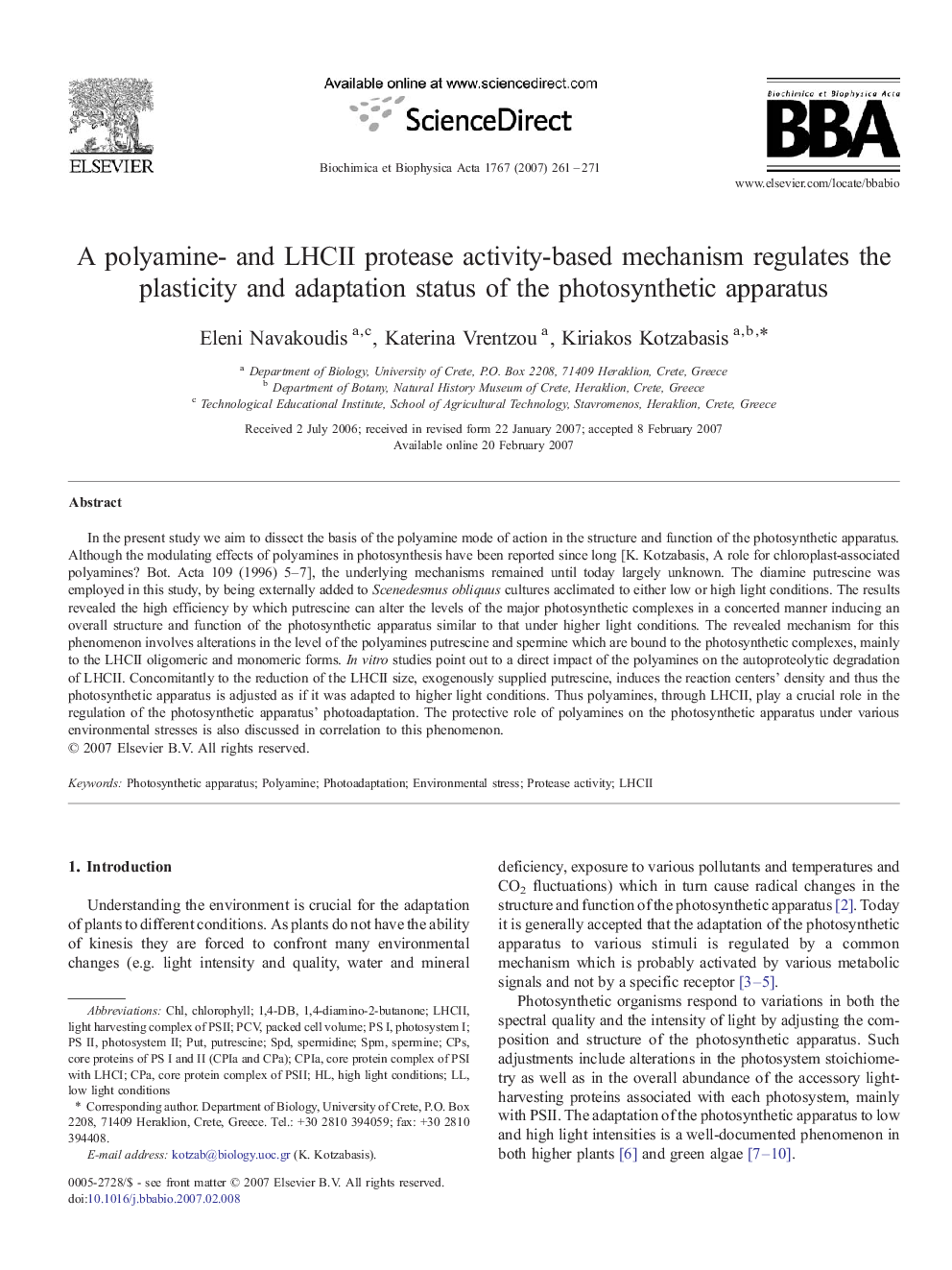| Article ID | Journal | Published Year | Pages | File Type |
|---|---|---|---|---|
| 1943528 | Biochimica et Biophysica Acta (BBA) - Bioenergetics | 2007 | 11 Pages |
In the present study we aim to dissect the basis of the polyamine mode of action in the structure and function of the photosynthetic apparatus. Although the modulating effects of polyamines in photosynthesis have been reported since long [K. Kotzabasis, A role for chloroplast-associated polyamines? Bot. Acta 109 (1996) 5–7], the underlying mechanisms remained until today largely unknown. The diamine putrescine was employed in this study, by being externally added to Scenedesmus obliquus cultures acclimated to either low or high light conditions. The results revealed the high efficiency by which putrescine can alter the levels of the major photosynthetic complexes in a concerted manner inducing an overall structure and function of the photosynthetic apparatus similar to that under higher light conditions. The revealed mechanism for this phenomenon involves alterations in the level of the polyamines putrescine and spermine which are bound to the photosynthetic complexes, mainly to the LHCII oligomeric and monomeric forms. In vitro studies point out to a direct impact of the polyamines on the autoproteolytic degradation of LHCII. Concomitantly to the reduction of the LHCII size, exogenously supplied putrescine, induces the reaction centers' density and thus the photosynthetic apparatus is adjusted as if it was adapted to higher light conditions. Thus polyamines, through LHCII, play a crucial role in the regulation of the photosynthetic apparatus' photoadaptation. The protective role of polyamines on the photosynthetic apparatus under various environmental stresses is also discussed in correlation to this phenomenon.
